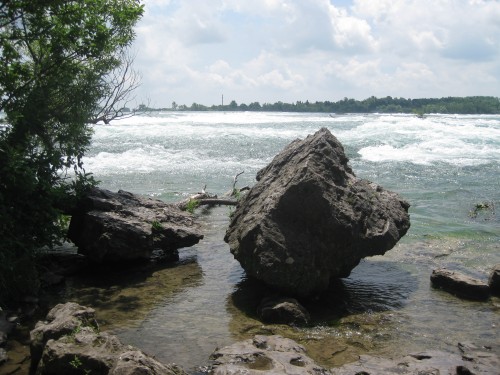Niagara Could Have Fallen Further…
People tend to view Niagara Falls as a natural wonder surrounded by manmade blunder. If not for Olmsted’s efforts, it would be a whole lot worse.
During the 1870s & ’80s, Olmsted was deeply involved in efforts to preserve Niagara Falls. A portion of what Olmsted called for got done. During this era, the Niagara riverfront was lined with sawmills and bustling with carny style amusements. These blights to the waterfront were removed, at least.
What Olmsted wasn’t able to accomplish: getting a buffer of undeveloped land set aside to surround the falls. Thankfully, the current view of the falls isn’t marred by any sawmills. But look around and you’ll still see hotels, casinos, and office towers looming in the near-distance. The Canadian side is usually deemed more tasteful. But I have to say: both sides are pretty much equal when it comes to breaking the feeling that you’re in a beautiful natural place.Â
One can only wonder what Niagara Falls would be like if Olmsted had fully gotten his way. Picture this amazing waterfall nestled in the middle of a wilderness park. You could take a bus or drive in a certain distance — just like Yosemite, say, or the Grand Canyon — then walk to the falls via trails. Imagine hiking along, this roaring sound in the distance, and then you’d come to a lookout point  — and there she falls!
BTW, on my visit to the falls today I went to the Three Sisters Islands, a favorite spot of Olmsted’s. The islands are in the headwater rapids before the water plunges over the falls. You can walk from island to island using a series of footbridges. At certain points, the view remains remarkably unspoiled (photo below), much as it was in Olmsted’s day.Â
Visiting this spot makes me thankful for the measure of preservation Olmsted achieved. Visiting the nearby falls I was struck as always by how truly awe-inspiring they are — but also left thinking about what might have been.
